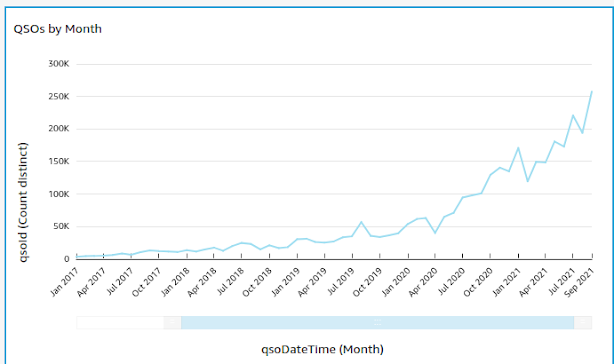RF Exposure
I'm not a lawyer. Or a physicist. Or even a real engineer. This isn't legal advice, or a step-by-step guide to how to perform your RF-safety evaluation. This is just one ham's story about something interesting that came up in the course of trying to make sure his station was safe.
Earlier this month, the FCC's new rules regarding the need for amateur radio operators to perform a radio frequency (RF) safety evaluation went into effect. The specifics of the regulations, their purpose, and how to comply is a topic that has been well covered by people who have expertise on those subjects. This article won't be a deep dive on any of that. Instead, I'll summarize by making three points
- Exposure of human tissue to RF energy results in energy transfer that has the potential to cause skin burns, eye injuries, and other adverse health effects
- Most amateur radio activity occurs on frequencies and at power levels where those adverse health effects are negligible
- Because of #2, the FCC offered amateur radio licensees a shortcut to avoid performing a more detailed analysis of RF risk, but not anymore
The first point is straightforward physics and biology; there's not much you can do about that. The second point is still good news: chances are your station's evaluation will conclude that you're safe. As for the third point, well, there's little likelihood that the FCC will change their policies back anytime soon. For the time being, we're more or less stuck with the need to sit down and figure out if our stations are safe.
The American Radio Relay League provides an online RF exposure calculator. The calculator is well documented, and pretty easy to use. I make the overwhelming majority of my QSOs by doing Parks on the Air activations. I realized right away that this presents a couple of unique challenges. First, if I'm operating near my car with a ham stick mounted to the car top at a busy park where other park visitors are walking around and getting in and out of their cars, those visitors could get much closer to my antenna than would be the case if I had a forty-foot tower on top of my house. Second, and related to the first, is that those other park visitors aren't there because they want to be exposed to strong RF fields. In the interest of being a good neighbor, this meant that I would probably want to be as conservative as possible in estimating values to enter into the calculator's input fields, and that I would definitely want to take into consideration the uncontrolled environment portion of the calculator's output. For example, I entered the full 100 watts of my transmitter's output in the power at antenna field, rather than try to estimate the loss over the relatively short coax run from my rig to the ham stick.
I ran the numbers for a variety of frequencies and duty cycles. The minimum safe distance in most cases was under a meter; a meter and a half, tops. Mounting the antenna on the car top was enough to ensure that nobody would get that close. There was, however, one glaring exception. With the pickup in the current solar cycle, I've discovered the fun of operating FM on ten meters. As I described in a couple of tweets recently, for someone who's spent a lifetime hearing scratchy signals in AM, SSB, and CW below 30 MHz, the sound of that FM noise suppression bouncing across the ionosphere is otherworldly. That might be true, but it might not be the best mode to use in a busy park. At 100 watts and a 100% duty cycle on 29 MHz, the minimum safe distance for an uncontrolled environment is just over two meters. It's conceivable that someone walking right past my car—or my wife sitting in the car doing her cross stitching—could wind up just inside that two-meter bubble. Unless I'm sure that I'm in an isolated spot, I intend to stay off ten meters FM on activations, or wait for a day when band conditions are ideal and I can dial back the power.
Looking at ham radio Twitter and ham radio YouTube, it's probably safe to say that the new FCC requirement has not been looked at as entirely welcome news. In a way, that's to be expected. Complaining about government regulations is as American as apple pie, or a Fourth of July barbecue. We got into this hobby to talk on the radio, not to have to do a bunch of paperwork. But we also got into this hobby to learn new things. By running the calculations, I learned something new, something that could prevent injury to myself, my family, or to my fellow park visitors. I'll call that a win.


Comments
Post a Comment